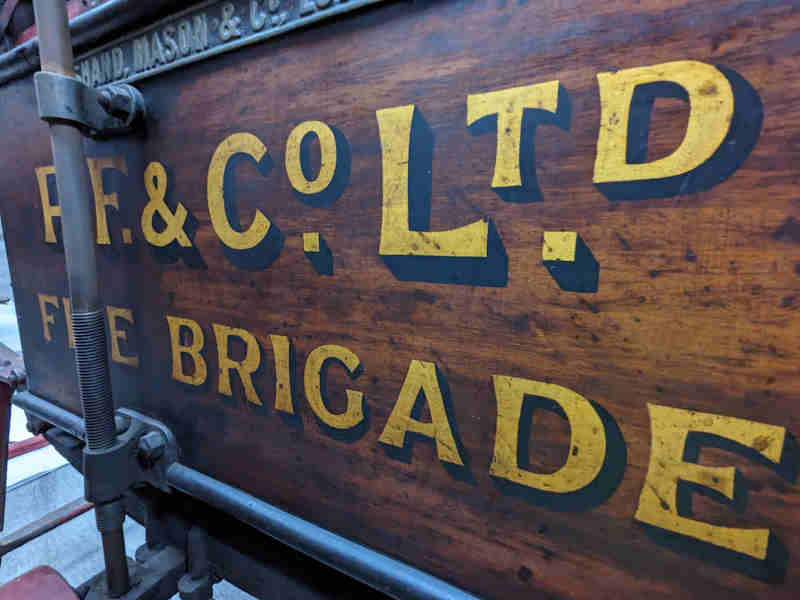
An exciting discovery
The museum curators have been discovering more about this intriguing item in the museum's collection. This is a wheeled escape ladder that was donated back in 1965, and the collections database entry noted that P. F. stood for Peek Frean & Company Ltd., of Bermondsey biscuit factory fame.
The curators sifted through other related documents, including letters from Peek Frean to London Fire Brigade in 1965 offering to donate the ladder, and the story started to emerge.
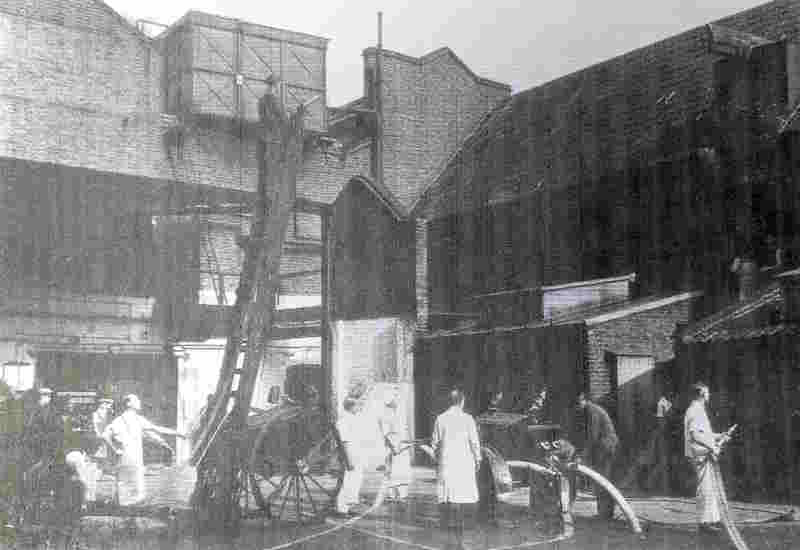
A 40 ft. Shand Mason and Co. Patent Curricle Fire Escape
We could see some key facts about the item from the paperwork;
- It was likely manufactured in around 1895 by Shand Mason and Co.
- It was first used by the Peek Frean Fire Brigade from around 1906
- Three extensions allowed the ladder to reach 40 feet
- It was “in full working order and in excellent condition and has obviously been regularly maintained” (more on that later!)
To find out more we linked up with the fantastic Curators Gary and Frank from the Peek Frean Museum. The museum is a treasure-trove and based in part of the old Peek Frean factory building, over in Bermondsey.
[The wheeled fire escape being used during a drill practice in 1935 - Image courtesy of The Peek Frean Museum]
The Peek Frean Fire Brigade
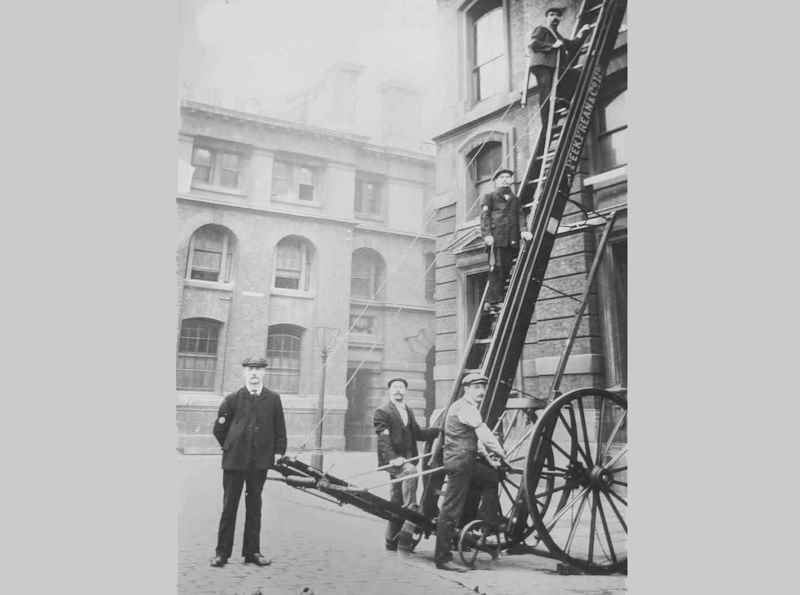
Why were industrial fire brigades needed onsite?
Industrial companies and factories working with flammable materials, and processes, had their own trained firefighters based on site. This was to lower the risk of, and where possible to prevent, fires.
If the worst were to happen onsite, crews could quickly tackle smaller blazes until the fire brigade for the area arrived to take over.
During the First World War men enlisting into the military led to massive shortfall in firefighters. Crews from these industrial brigades supported London Fire Brigade. For example, the Kodak Factory in Wealdstone had its own motorised fire engines.
[A drill practice in 1905 - Image courtesy of The Peek Frean Museum]
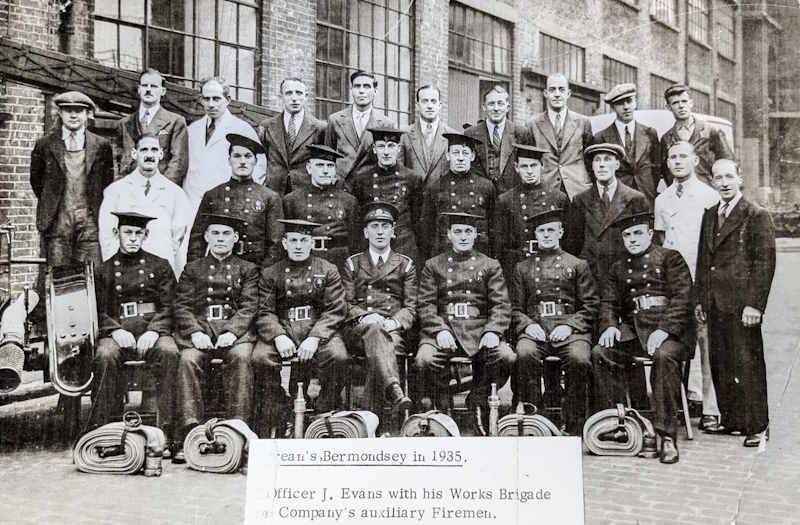
Brigade origins
Curator Frank (also a former member of the brigade) shared his research with us;
The first mention of an onsite Brigade was made in a fire report in 1873. The fire destroyed Peek Frean’s Dockhead Factory despite the actions of the onsite Brigade and the Metropolitan Fire Brigade (which went on to become London Fire Brigade in 1904)
By 1879 there were 14 men in the Company’s brigade. “Their uniforms consisted of leather helmets, green tunics, knee length leather boots, cap and belt (with hose wrench, lamp and axe). Trousers were supplied by the men. At a later date the leather helmets were replaced by metal ones.”
[The Peek Frean Fire Brigade in 1935 - Image courtesy of The Peek Frean Museum]
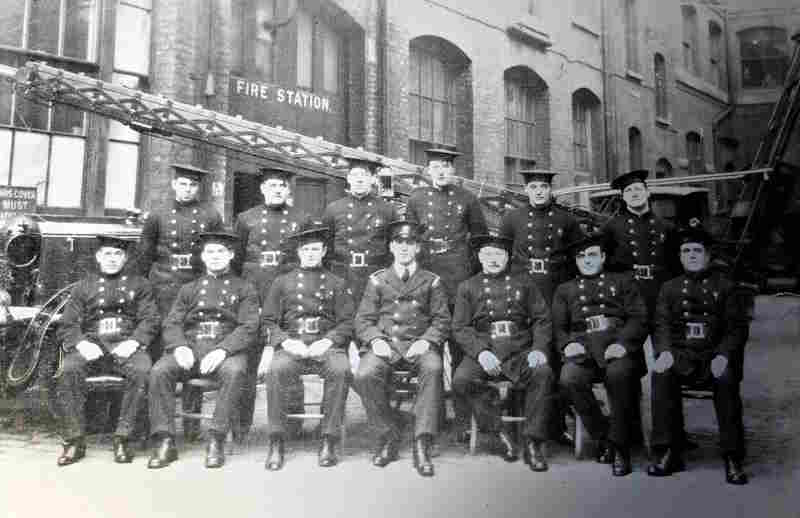
Firefighting kit
There are interesting comparisons between the uniforms of private and industrial fire brigades and the Metropolitan Fire Brigade (MFB). The ornate brass helmets were based on the examples that Chief Officer Captain Sir Eyre Massey Shaw had introduced to the MFB in 1868.
The tunics worn were also very similar to MFB examples. The MFB woollen tunic was also introduced by Chief Officer Shaw from around the 1860s. Wool is naturally water and flame resistant as well as being warm, and the tunics were designed without a hem around the bottom so that any water on the surface could run straight off.
General fire protection was not a focus at the factory until 1906 when a Fire Committee was formed under Mr John Carr, Chairman and Chief Fire Officer of the Esher Fire Brigade, Surrey, and supported by Peek Frean Chief Fireman Purchase.
[The Peek Frean Fire Brigade in 1938 - Image courtesy of The Peek Frean Museum]
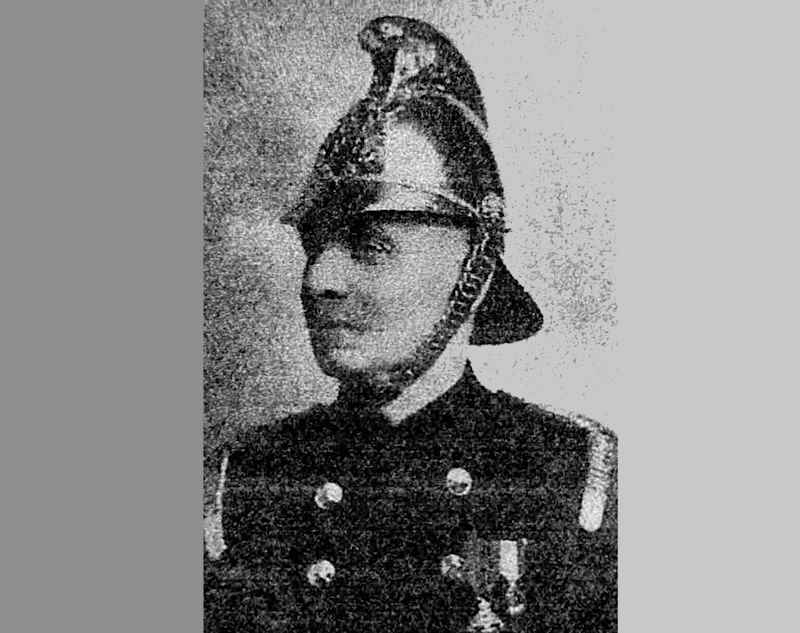
Chief Fireman R W Purchase
From biscuits to ships to firefighting, via the MFB! This is an excerpt of a biography that was shared in the in-house magazine ‘The Biscuit Box’ February 1926
Purchase joined Peek, Frean & Co. in 1875, working on No. 18 Oven. The following year he left to join the Royal Navy and took part in Naval operations in the Dardanelles in 1878. After around 10 years of service, he joined the Metropolitan Fire Brigade. In 1888, due to family reasons, he re-joined Peek Frean as a firefighter.
At that time two firefighters and two watchmen looked after the buildings, alongside their ordinary duties. By 1922 the Brigade consisted of 12 regular firefighters. Four members were always on duty day and night, alongside 16 auxiliary firefighters, all under the charge of Chief Fireman Purchase.
In 1926 there were still 12 regular firefighters protecting the site, but the number of auxiliary firefighters retained for emergencies had risen to 27.
[Chief Fireman Purchase in around 1926 - Image courtesy of The Peek Frean Museum]
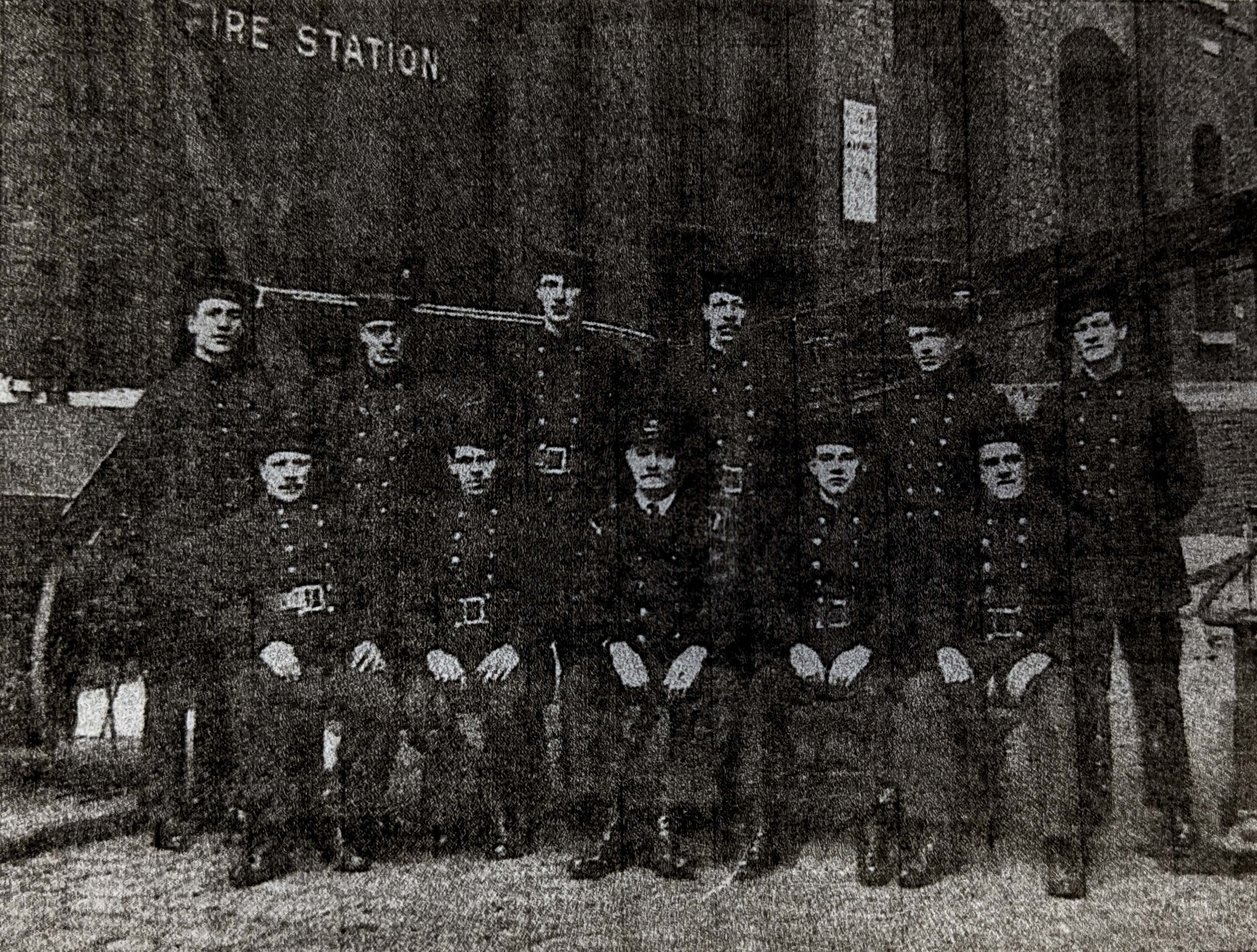
Improving the Brigade
During Purchase’s service he supported the training, and improved the efficiency of the Brigade, in line with the company’s focus, led by Chairman John Carr, on fire protection.
Purchase attended demonstrations in France and Belgium, at the invitation of La Fédération Nationale des Sapeurs-Pompiers Français and La Fédération Royale des Corps des Sapeurs-Pompiers de Belgique.
[The Peek Frean Fire Brigade in 1922 - Image courtesy of The Peek Frean Museum]
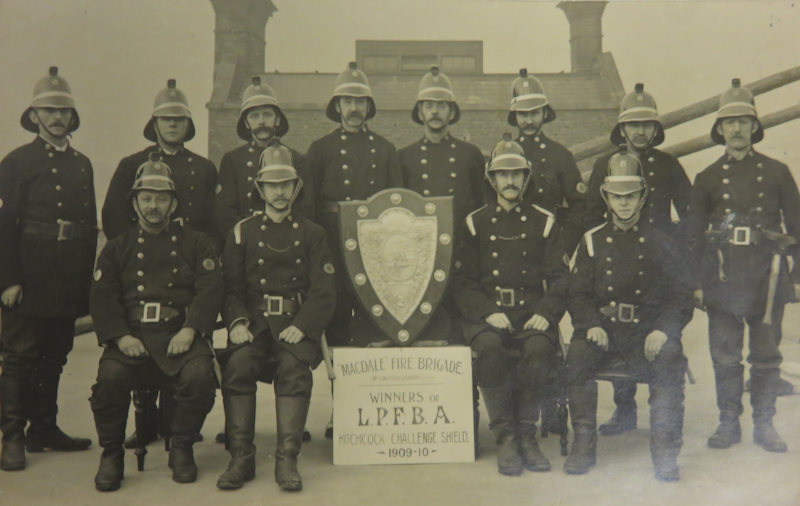
London Private Fire Brigade Association (LPFBA)
The Peek Frean Fire Brigade joined the London Private Fire Brigade Association (LPFBA) in the 1920s. LPFBA had formed in 1899 and it ran competitions between other private Fire Brigades. The Association had their own medals system, including long service. Similar competitions and recognition of achievements were also part of Metropolitan Fire Brigade, and later London Fire Brigade, operations.
The Peek Frean in-house magazine ‘The Biscuit Box’ noted “The P F Brigade have, as new members, shown up remarkably well, and have carried off a number of trophies at different times’
There were many other private Brigades that were also members of the LPFBA. These include McCorquodale & Co. Ltd., a printers and stationers, which opened factories in Cardington Street in London during the 1860s. Their onsite firefighters were known as the MacDale Fire Brigade.
[MacDale Fire Brigade Firefighters in 1910 - London Fire Brigade Museum]
Please note there is no recorded audio. The use of this footage was kindly granted by the Peek Frean Museum.
The wheeled fire escape in action
This fire drill was carried out at the Peek Frean biscuit factory by the onsite Fire Brigade in 1906.
The recording was made by Cricks and Martin, and this is a short snippet from their 1906 silent film titled 'A Visit at Peek Freans Factory' (which runs 35 minutes in total).
Our Shand Mason and Co. Patent Curricle Fire Escape
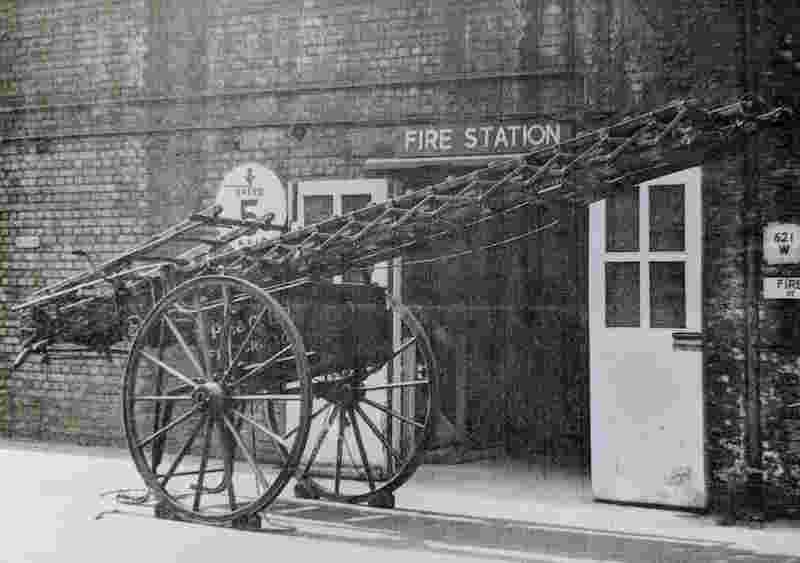
How it became part of the Museum's collection
How the wheeled fire escape came to be part of the Peek Frean Fire Brigade is not totally clear, but it is believed to have been obtained from the Esher Fire Brigade by Chairman John Carr, as he served as their Chief Fire Officer.
Although the only action the ladder saw was being part of the planned drills, the Peak Frean Fire Brigades' firefighters were tasked with the weekly job of carefully cleaning and oiling all the parts to keep it in tip top condition, just in case.
An article from the Peek Frean in-house magazine in the 1960s shares how the decision was made to offer the ladder to the London Fire Brigade Museum. As “although generally in splendid condition for its age, it was getting a bit creaky in the joints and was no longer really safe.”
The author signed off with the following fond farewell -
“Long may our Patent Curricle rest in its new home, its metalwork agleam, its wooden sides proudly bearing the gold lettering P F & CO LTD FIRE BRIGADE”
[The wheeled fire escape in around the 1950s - Image courtesy of The Peek Frean Museum]
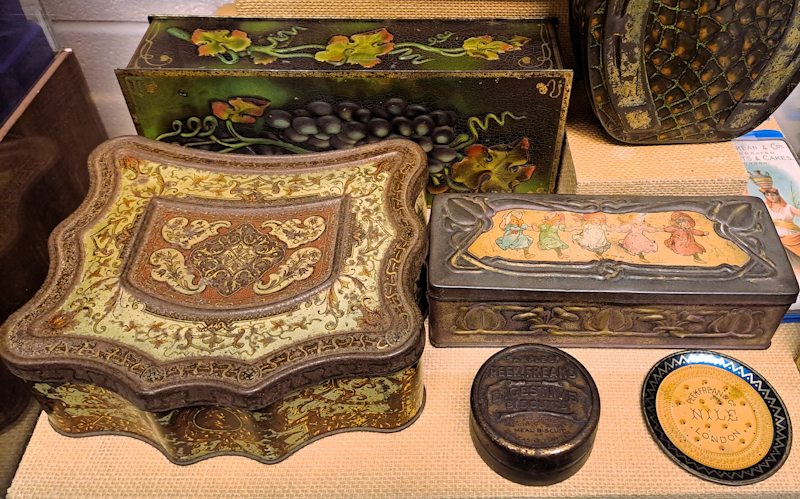
Thanks and acknowledgements
This exhibition was made possible with generous contributions from Curators Frank and Gary. Sharing their expert knowledge, and fascinating archives, to provide us with such detailed research for this online exhibition.
The Peek Frean Museum is open for visits by appointment, more details here.
[Biscuit tins on display at the Peek Frean Museum]
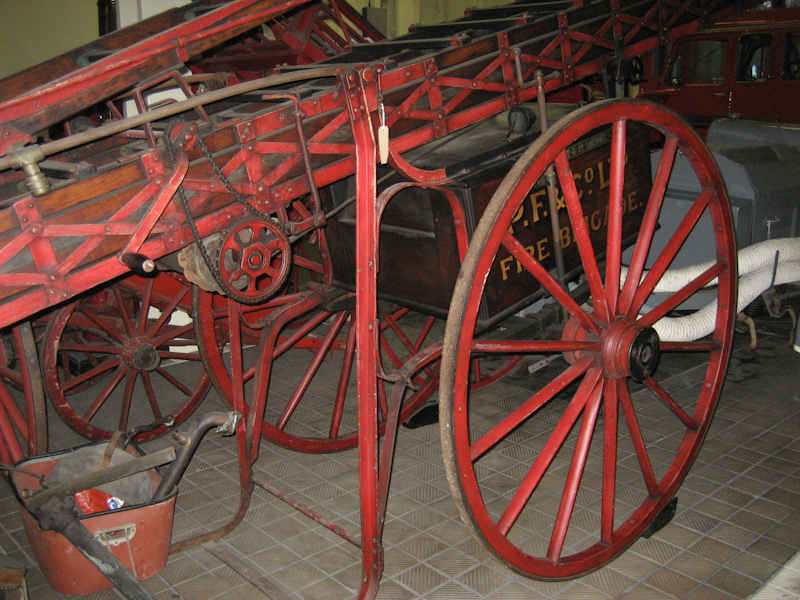
Let us know what you thought
Please complete our short survey to let us know what you thought of this exhibition, and importantly what you’d like to see more of from the museum in the future.
[The wheeled escape ladder previously on display in the London Fire Brigade Museum at Winchester House - now closed]
